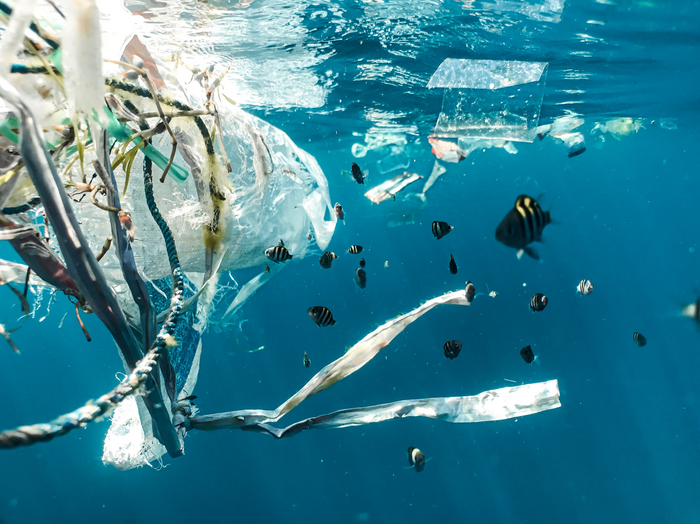Recent research published in PeerJ Life and Environment by Rebecca Helm et al. at Georgetown University illustrates why it is essential that assessment methods and examination of ecosystem effects of novel high seas activities account for ambiguity, using The Ocean Cleanup (TOC) as a model.
 Microplastics in Ocean. Image Credit: Naja Bertolt Jensen.
Microplastics in Ocean. Image Credit: Naja Bertolt Jensen.
The surface is the skin through which our ocean breathes. It is a critical nursery ground for hundreds, possibly thousands, of species, and it is also one of the most vulnerable regions to human impacts. This is why we must treat the surface with exceptional care. It is an extremely unique and fragile environment, and small impacts at the surface could ripple into large impacts above and below the waves.
Dr. Rebecca Helm, Assistant Professor, Environmental Science, Georgetown University
Beyond national jurisdiction, the open ocean covers nearly half of the Earth’s surface, is relatively unexplored, and is an emerging frontier for human industry. Knowing how human activity affects high seas ecosystems is important in managing the other half of the planet.
This work highlights how little we truly know about the high seas, and why research on high seas ecosystems is so important. Even with the best available science and knowledge, we are not able to predict the scope of impacts, which could range from a modest decline in population numbers to a total collapse.
Dr. Rebecca Helm, Assistant Professor, Environmental Science, Georgetown University
The TOC’s objective is to gather plastic from the ocean’s surface using enormous nets. This method, however, results in the capture of surface marine life (neuston) as by-catch. Helm et al. investigate the social-ecological repercussions of this behavior using an interdisciplinary approach.
The research assesses the links between these ecosystems and society using an ecosystem service method and reviews the governance setting pertinent to regulating high seas operations using population models to assess potential impacts on the surface environment.
The findings demonstrate that the impact of ocean surface plastic removal is mostly determined by neuston life histories (which are unknown) and can range from mild to severe.
“Humans will continue to push into the high seas, and it is essential that we have strong science on high-seas ecology to ensure human activities are not putting ecosystems at risk,” Dr. Rebecca Helm adds.
Imagine walking into a forest and knowing nothing about the trees. You have names for them, but you do not know how fast they grow, what nutrients they need, what species live among their branches, or what species feed on their leaves. This is our state of knowledge for the ocean's surface ecosystem. This is why we must be extremely careful about how we interact with this environment.
Dr. Rebecca Helm, Assistant Professor, Environmental Science, Georgetown University
The broader social-ecological ramifications of this influence may be felt by stakeholders outside and inside national jurisdiction, indicating how high-seas activities may impact society closer to shore.
The legal framework applicable to TOC’s activity is insufficiently specific to address both the ecological and social uncertainty described by the authors, highlighting the pressing need for elaborate rules and procedures on environmental impact assessment and strategic environmental assessment to be implemented under the new International Agreement on the conservation and sustainable use of marine biological diversity in areas beyond national jurisdiction that is currently being negotiated.
Journal Reference:
Spencer, M., et al. (2023). Estimating the impact of new high seas activities on the environment: the effects of ocean-surface macroplastic removal on sea surface ecosystems. PeerJ. doi.org/10.7717/peerj.15021.